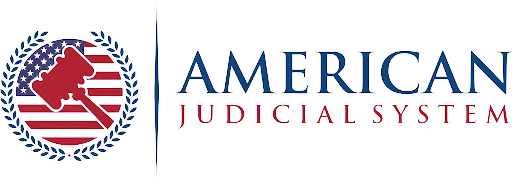Workplace discrimination affects many employees, and finding a lawyer who specializes in these claims often proves essential. Employers may sometimes make decisions regarding hiring, promotions, or pay based on factors unrelated to an employee’s skills and performance. Workers who face such bias must understand their rights and available legal options. Legal professionals concentrate on facts, established laws, and precedents. They assist victims in navigating a complex system while offering support and representation.
A comprehensive look at the subject reveals definitions of workplace discrimination, accounts of cases from various industries, and valuable guidance on locating a specialized attorney. Workers must become aware of their rights and relevant steps to protect themselves from bias or unfair treatment at work.
Understanding Workplace Discrimination
Workplace discrimination covers unwarranted or unfair treatment because of a protected characteristic. Protected characteristics include race, gender, age, religion, disability, and sexual orientation. Employees may experience adverse actions such as wrongful termination, demotion, harassment, or paying unequal wages. A dedicated lawyer plays a key role in advising on whether these actions violate laws such as the Civil Rights Act, the Age Discrimination in Employment Act, the Americans with Disabilities Act, or similar statutes at the state level.
Workers must note the unwelcome behaviors include verbal abuse, exclusion from projects, or biased evaluations. Legal recourse depends on proving that these actions were not based on legitimate employment reasons. Laws related to employment equality are rooted in decades-old legislation. Evidence in records, workplace email correspondence, and documented policies often helps prove a claim.
Trustworthy information from regulatory bodies provides insight into workplace discrimination trends, making legal representation a practical necessity. A competent lawyer for workplace discrimination analyzes the evidence, explains legal rights, and supports a strategy to obtain remedy through settlement or litigation.
Key Causes of Workplace Discrimination Claims
Discrimination issues are not limited to a single factor or a single industry. Many aspects explain disputes relating to employment decisions. Misunderstandings about expectations lead to claims when personal bias interferes with professional opportunities. Workers on maternity leave or those with disabilities sometimes face unequal treatment. Management practices, internal biases, and even office culture contribute to these claims. Healthcare professionals, educators, retail employees, and industrial workers alike may experience workplace discrimination.
Legal practice areas typically extend into issues such as harassment and retaliation when an employee reports unfair treatment. Retaliating against those who claim discrimination only worsens workplace conditions and underscores the importance of legal assistance. A lawyer specializing in these cases becomes a safeguard against an employer’s overreach and may help secure a fair work environment.
Establishing the Need for Specialized Legal Representation
Employees who suspect discrimination must recognize the critical role a specialized lawyer plays. Expertise in workplace discrimination law means the attorney has in-depth knowledge of the relevant statutes and court practices. Specialized legal counsel examines detailed case facts, organized evidence, and points out how local or federal laws protect discriminated workers’ rights. Strategic legal action requires a clear understanding of legal deadlines and procedures. Filing a claim involves rigorous documentation and meeting strict legal requirements.
An attorney for workplace discrimination is skilled in calculating damages, which in many cases include lost wages, emotional distress, or punitive damages against employers with repeated violations. Proficient legal experts often coordinate with expert witnesses, gather testimonials, and uncover workplace practices that supported discrimination. Their guidance simplifies the legal process for employees and helps inform them of their options.
Recognizing Your Legal Rights
Every worker deserves respect and fair treatment at work. Laws protect employees by ensuring decisions about hiring and promotions occur without bias. Workers must note their rights regardless of the size of their organization. Employment laws prevent wrongful termination based solely on discriminatory attitudes. In some instances, employers may use vague criteria to justify decisions, but a legal review often clarifies when these methods conflict with statutory protections.
Employees should carefully track instances of discriminatory behavior. Documentation might include dates of incidents, names of supervisors or colleagues involved, and copies of emails or memos that indicate bias. Detailed records of events help build a strong case and support a claim of workplace discrimination.
How to Determine if You Have a Claim
Workers often ask how to know whether their situation qualifies as discrimination. Assessing the situation involves comparing employer actions against the clear legal definitions of discrimination. Several common indicators point to a valid claim:
• Unjustified differences in pay between employees performing similar roles.
• Unequal assignment of projects or client responsibilities.
• Unwarranted negative performance appraisals that deviate from past evaluations.
• Decisions directly influenced by personal biases regarding race, gender, age, or religion.
Documentation remains key; precise records and clear evidence can support your claim. Seek advice from experienced legal professionals to help evaluate whether your case meets the necessary legal threshold.
Steps to Take If You Experience Discrimination
When a worker encounters workplace discrimination, prompt action contributes to a stronger case. Many employees try to resolve issues directly with their employer by discussing behaviors with a superior or through human resources. If this approach does not yield satisfactory results, legal counsel becomes necessary.
Below are practical steps:
- Document every incident. Meticulous records reinforce the claim.
- Identify any available witnesses. Statements from colleagues who observed the incidents add credibility.
- Gather policy documents. Internal guidelines may highlight a breach in established procedures.
- Schedule a consultation with an attorney specialized in workplace discrimination. This meeting evaluates whether the incident qualifies legally.
Following these steps improves prospects for resolving the matter favorably either through an internal process or legal action.
Legal Options for Affected Employees
Affected workers have access to multiple legal remedies that aim to restore fairness in the workplace. Options include mediation, arbitration, filing a claim with the Equal Employment Opportunity Commission (EEOC), or pursuing litigation. Filing a complaint with a government agency remains common. In many cases, legal professionals assist in gathering evidence, drafting legal briefs, and preparing witness testimony for deposition.
The process may involve:
• Working with a lawyer to conduct an internal investigation in the company.
• Collecting necessary evidence to support the claim.
• Pursuing legal actions that may result in compensatory damages or corrective actions from the employer.
Each case presents unique circumstances. Selecting the right approach involves consultation with legal professionals who comprehend local practices and statutory requirements.
Filing a Complaint With the EEOC and Other Agencies
The Equal Employment Opportunity Commission receives many workplace discrimination claims. The agency provides structured procedures to handle cases. Filing a claim with the EEOC typically represents the first step before pursuing court action. Workers should contact the agency promptly because deadlines apply. Legal counsel guides employees on filing complaints accurately, ensuring critical dates remain observed.
Below is a table summarizing key filing deadlines based on the type of discrimination claim. This table outlines the necessary timelines and procedures for various discrimination claims:
| Type of Discrimination | Filing Deadline with the EEOC | Notes |
|---|---|---|
| Race, Color, Religion, Sex, National Origin | 180 days from the incident date | Extended to 300 days if a state or local agency enforces similar law. |
| Age Discrimination | 180 days from the suspected discriminatory act | Time frame may vary in certain states. |
| Disability Discrimination | 180 days from the date of the alleged incident | Workers must keep all related medical and employment records. |
| Sexual Harassment | 180 days from the last occurrence | Documenting patterns can support the claim. |
A lawyer for workplace discrimination helps workers navigate these deadlines and ensures that all procedural requirements meet legal standards.
How Lawyers Prepare and Present Your Case
Specialized attorneys prepare discrimination claims by gathering evidence, organizing documentation, and identifying legal precedents. A skilled attorney reviews employment policies and scrutinizes workplace practices. They compile detailed timelines that connect discriminatory incidents to violations of established laws.
A lawyer begins by assessing:
• Employment history records.
• Personal records of incidents.
• Internal communications that may provide evidence of biased decisions.
Next, evidence integrates into a comprehensive claim that presents the facts clearly. Expert testimonies and reports from specialists sometimes support claims. The legal team builds a narrative that links discriminatory practices to tangible losses, such as missed promotions or emotional distress.
An attorney may also call on specialists in psychology or human resources. They provide valuable insights into how sustained bias affects mental wellbeing and productivity. The gathered evidence supports a claim during arbitration, mediation, or trial. A specialized lawyer guides the worker through this procedure, explaining the roles of court officials and negotiating with opposing counsel.
Statistical Overview of Workplace Discrimination Claims
Data on workplace discrimination can provide useful insights into trends and affected demographics. Regular research and studies share similar findings regarding employee experiences. Below is a table that summarizes recent findings based on data from leading research institutions:
| Statistic | Value | Source/Survey |
|---|---|---|
| Percentage of discrimination claims by gender | About 35% of cases involve gender bias | National Workplace Equity Report (2022) |
| Cases involving racial discrimination | Approx. 42% of claims involve racial bias | Employment Discrimination Data Review (2021) |
| Average time taken by EEOC to resolve a case | 14 months | EEOC Annual Report (2022) |
| Percentage of claims resulting in settlements | Nearly 60% of cases resolve out of court | Federal Discrimination Statistics (2022) |
These figures prove the prevalence of discrimination issues. Data indicates a strong need for specialized legal representation that understands how to interpret government statistics and translate them into actionable legal strategy. A skilled attorney uses statistics to build a case that is fact-based and compelling to judges and juries.
Cost Structures and Fee Arrangements in Discrimination Cases
Financial considerations influence many workers when considering legal action. Attorneys serving workplace discrimination cases often work with contingency fees. Under this fee arrangement, the lawyer receives a percentage of the settlement amount if the case succeeds. This structure minimizes the upfront expense for the worker and motivates the lawyer to pursue favorable outcomes.
Other cost arrangements sometimes involve hourly billing or fixed fees for consultation and early case preparation. It remains critical to discuss fee structures during an initial consultation. Ask specific questions about:
• Potential outcome-based fees
• Any upfront costs
• Possible additional expenses for expert witnesses or further investigations
Employers sometimes avoid compensation for discrimination claims. A professional attorney reviews similar cases and estimates the range of fees based on outcomes achieved previously. Workers are encouraged to obtain multiple perspectives during consultations to assess the best financial and legal arrangement. The fee structure transparency and clarity provide trust, enabling workers to focus on resolving their claims without additional stress related to legal costs.
Recent Case Studies and Examples
Collected case studies offer insight into various scenarios. Several recent cases highlight effective legal representation against discriminatory practices. In one case, an employee documented continuous discriminatory comments from a supervisor over several months. The records included emails, witness testimonies, and a history of similar comments against other employees. The attorney built a case that not only identified a pattern of behavior but also successfully argued that the company’s oversight allowed such practices to permeate the workplace. Settlement negotiations eventually resulted in compensation covering lost wages and emotional distress.
Another case involved an older employee who terminated a long-term career based solely on age-related bias. Documentation of performance over decades and a thorough review of relevant personnel policies played significant roles in the legal process. The attorney demonstrated that the employment decision violated age discrimination statutes. The case concluded with a favorable settlement for the employee.
A third example involved an employee diagnosed with disabilities. The employer failed to provide necessary workplace accommodations or maintain a work environment free from bias. The lawyer assisted in assembling medical records, performance reviews, and internal emails showing repeated requests for accommodations. The case reached the court, where the legal argument formed by evidence and supported by expert testimony yielded a significant award for the claimant.
These real-life examples highlight that successful claims rely on precise evidence collection, expert legal guidance, and systematic documentation. Legal experts for workplace discrimination cases leverage documented facts and personal testimonies to bring justice to individuals who suffered bias.
Evaluating Qualifications in a Lawyer for Workplace Discrimination
Selecting a lawyer with a strong background in employment law and discrimination cases matters. Workers might begin by considering the following factors:
• Record of success in similar cases
• Years of practice in employment law
• Familiarity with national and local employment regulations
• Transparent fee structures and client testimonials
Workers should ask potential lawyers for case histories and references. An attorney can explain past verdicts and how similar circumstances resulted in compensation. Consultations provide insight into the lawyer’s approach and receptiveness to the worker’s concerns.
Professional associations, client reviews, and referrals from trusted sources help assess legal expertise. For instance, employees might review ratings on legal directories or request references from previous clients. These measures help ensure that workers obtain legal services tailored to their specific discrimination issue.
Assessing the Impact of Workplace Discrimination on Career and Health
The effects of workplace discrimination reach beyond immediate job-related losses. Emotional toll, stress, anxiety, and impacts on professional reputation contribute to long-term challenges. Many affected workers experience a decline in overall productivity and mental wellbeing. Expert legal advice can provide guidance regarding physical and emotional support systems.
Studies from healthcare agencies connect prolonged exposure to discriminatory practices with negative mental health outcomes. Access to remediation through legal means not only supports the worker’s career but also provides a path toward improved mental health. Legal professionals typically suggest that victims pursue therapy or join support groups during the resolution of their claims.
An attorney’s advice may include:
• Seeking professional counseling
• Finding local support networks
• Documenting health incidents related to workplace bias
These steps help workers recover from the negative experiences of discrimination and assist in addressing claims both legally and personally.
Factors Influencing the Outcome of a Discrimination Case
Several variables contribute to the outcome of legal claims. The strength of evidence often plays a major role. Advantages may include corroborative witness accounts, detailed documentation, and adherence to legal deadlines. Other elements such as the size and resources of the employer or even the company culture might influence the case outcome. Courts typically review a combination of hard evidence and testimony from affected workers to determine if discrimination occurred.
Other influential factors include:
• Comprehensive record keeping by the employee
• The ability of a lawyer to clarify the timeline of events
• Employer responses to internal complaints
• Independent audits or investigations that confirm bias
A lawyer for workplace discrimination integrates these factors, assisting workers in presenting a strong case and, if necessary, negotiating a fair settlement.
The Role of Mediation and Alternative Dispute Resolution
Mediation offers a platform for employees and employers to resolve disputes without extensive litigation. In mediation sessions, a neutral mediator guides discussions aimed at reaching an agreeable settlement. For many workplace discrimination cases, mediation provides several benefits:
• Saves time and lowers financial strain
• Offers a controlled environment for discussing sensitive issues
• Promotes a mutually acceptable agreement
• Avoids prolonged public exposure of the company
A lawyer helps negotiate mediation terms and advises on whether the agreement suitably addresses all losses, including wage discrepancies, emotional harms, and reputational damage. Workers may opt for mediation as it supplies a less adversarial route compared to formal court proceedings.
Practical Advice for Selecting a Lawyer
Workers seeking legal representation must take careful steps to select an appropriate attorney. It is beneficial to schedule consultations with multiple lawyers who specialize in employment discrimination. Ask targeted inquiries regarding:
• Experience with similar cases
• Past outcomes and client satisfaction rates
• Potential legal strategies based on case specifics
• Payment structures and any additional costs
During consultations, a lawyer should clarify the approach and provide estimates on case timelines. Assessing the lawyer’s experience and reviewing previous case results adds assurance. Collecting testimonials and reviews from prior clients further aids in evaluating the lawyer’s reliability.
A summary table outlines points to consider during the selection process:
| Selection Factor | Considerations |
|---|---|
| Experience in Employment Law | Number of years practicing and percentage of cases won compared to similar discrimination types |
| Client Testimonials | Reviews from previous clients and success stories from comparable cases |
| Fee Structure Transparency | Clarity on fee arrangements (contingency, hourly, fixed) and any additional costs |
| Familiarity with Local Employment Regulations | Knowledge of regional statutes and compliance with local legal practices |
Workers equipped with this information can select a lawyer who best aligns with their unique circumstances and needs.
How Legal Reforms Affect Workplace Discrimination Cases
Legislation shifts and policy changes regularly affect the framework of workplace discrimination cases. Lawmakers sometimes propose amendments intended to refine definitions of bias and improve employee protections. Workers and lawyers must follow these legal updates to adjust strategies accordingly.
Recent reforms have emphasized enhanced record keeping, increased transparency in hiring practices, and stricter penalties for employers found guilty of systemic discrimination. Legal professionals play a leading role in interpreting these new regulations for prospective clients. They remain updated on case law and contribute to policy discussions that eventually benefit employees in the long term.
Industry conferences and legal publications help workers and lawyers stay informed. Training programs and workshops often share advances in methodologies for addressing employment discrimination in the modern workplace. Keeping abreast of these changes contributes to a stronger legal case and an environment that eventually promotes equal treatment for all workers.
Challenges in Proving Workplace Discrimination
Proving discrimination requires addressing several challenges. Determining motive behind an employer’s decision demands clear evidence of personal bias. Workers may face obstacles in proving bias when employer policies appear neutral on the surface. The lawyer for workplace discrimination must carefully articulate differences between legitimate management decisions and those influenced by bias.
Workers sometimes encounter issues such as:
• Lack of clear documentation
• Ambiguous comments or covert practices
• Retaliatory practices that create additional layers of complexity
Successful claims often depend on careful examinations of emails, performance reviews, and documented incidents. Legal experts advise gathering as much evidence as possible. They work with clients to identify inconsistencies in employer policies or deviations from past practices that indicate discrimination. Legal professionals help piece together details that reinforce a credible narrative.
Clear timelines that connect discriminatory actions to adverse outcomes support a worker’s claim. Evidence that documents consistency or repeated occurrences builds a compelling case. Workers receiving expert legal advice find themselves better prepared to meet the burden of proof required in disputes with employers.
The Broader Implications of Workplace Discrimination Cases
Cases of workplace discrimination influence more than individual careers. Legal actions against biased practices often contribute to broader shifts in corporate policies. When workers obtain favorable outcomes, employers may revise their internal procedures to foster more equitable treatment. The effects extend to creating standard practices that discourage biased decisions.
Companies sometimes initiate internal reviews after lawsuits or settlements. The review process incorporates external legal advice and benchmarks against national standards. These shifts help minimize future legal challenges and promote transparency. Workers experience environments that, while not free from challenges, maintain checks and balances that protect their rights.
Legal action sends a clear message that discrimination will face a measured response through legal channels. Documented cases create records demonstrating patterns of abuse and identify employers who neglect necessary reforms. Workers benefit as the approach keeps companies alert to the legal standards required in modern employment practices.
Resources Available for Affected Employees
Numerous resources exist for workers affected by workplace discrimination. Legal aid organizations provide advocacy and support. Employee assistance programs offer counseling where discrimination has negatively affected wellbeing. Government websites present educational materials explaining discrimination laws and guidelines for filing claims.
Workers must consider seeking support from renowned organizations such as the EEOC. Legal clinics sometimes offer free consultations, making professional guidance accessible regardless of financial status. Resources also include local or national support groups that provide both legal advice and emotional support during challenging times.
Workers should compile a list of accessible resources and contact local agencies that specialize in discrimination issues. The diversity of support systems means an affected worker rarely faces the situation alone. Consulting multiple sources ensures that the legal journey unfolds while retaining proper emotional and professional backing.
Looking Ahead: The Future of Workplace Discrimination Law
Employment laws adapt as new working styles emerge. The acceleration of remote work and technological changes occasionally leads to fresh disputes about danger zones for workplace bias. Legal experts suggest that remote work may create its own set of challenges, such as digital monitoring that may inadvertently favor or target employees based on personal characteristics. A lawyer specializing in workplace discrimination must remain informed on how technology intersects with law.
Workers who allege discrimination in modern, technologically advanced environments must show how new practices contravene established legal standards. Courts increasingly encounter cases where digital records and remote work policies require careful analysis. Legal professionals scan these changes, contributing to a body of case law that clarifies how legal protections extend to both physical and virtual offices.
Inclusive legal reforms and judicial decisions gradually shape the framework. The continuous improvement of statutory protections signals that legal standards will evolve and adjust to contemporary working conditions. Workers who seek legal counsel receive guidance not only based on traditional precedents but also on evolving interpretations of fairness, transparency, and equal treatment.
Advice for Employees Facing Discrimination Challenges
Workers experiencing bias must know that several pathways assist in addressing their issues. Consulting experienced legal professionals clarifies the legal rights afforded by state and federal law. These professionals provide counsel on documenting evidence impartially and how best to present a case before mediation or trial.
Workers should consider these recommendations when facing discrimination challenges:
• Maintain detailed records of all incidents.
• Seek advice promptly to adhere to legal deadlines.
• Engage with employee support programs for additional guidance.
• Consult multiple legal professionals to compare opinions and strategies.
Clear communication during legal consultations fosters a proactive approach. Employers are increasingly held accountable when patterns of discrimination emerge. With proper evidence and legal support, workers confirm their rights and take constructive steps toward filing claims.
For employees dealing with discrimination, a lawyer can transform a confusing and overwhelming situation into one that is navigable and well-structured. They reassure candidates that the legal system, supported by documented evidence and expert testimony, stands ready to address grievances. Understanding legal rights not only restores confidence in the workplace but also ensures that recurrences of bias are less likely to go unchallenged.
Tips for Preparing for a Consultation with a Lawyer
When considering a consultation, workers must prepare thoroughly. Organizing personal records and gathering evidence ensures that discussions with the lawyer prove productive. Below are several strategies to prepare for a consultation:
- Gather Documentation: Collect performance reviews, emails, memos, and any written feedback that supports the claim.
- List Key Events: Write down dates and circumstances of all perceived discriminatory acts.
- Record Witness Contact Information: Note colleagues who might support the claim by acting as witnesses.
- Know Organizational Policies: Locate the employee handbook with guidelines on discrimination and grievance procedures.
Workers who document their concerns clearly create a well-organized case file. This preparation helps avoid delays in the legal process and provides the attorney with detailed evidence at the initial meeting. Being organized affirms the worker’s commitment to pursuing a fair resolution.
Understanding the Importance of Evidence and Documentation
Appropriate evidence forms the core of any discrimination claim. Workers must compile thorough documentation showing patterns that reveal bias. This evidence may include digital records, internal communications, and even third-party evaluations of performance. Organized documentation simplifies the investigative process and clarifies the case for the legal professional.
Attorneys assess evidence using robust criteria. Documents that clearly show deviation from normal employment practices can influence negotiations and decision-making in court. Evidence that distinguishes between subjective managerial opinions and objective discriminatory practices remains paramount in establishing a strong claim.
Workers should maintain copies of all relevant records, even if the situation appears minor. A detailed log and timestamps for communications, meetings, and work assignments support the overall narrative. With clear and organized documentation, the lawyer for workplace discrimination finds it easier to assemble a compelling case.
Impact of Workplace Discrimination on Organizational Culture
Organizations benefit when they address bias and implement effective human resource policies. Companies with a proactive strategy for preventing discrimination often invest in training programs, review internal policies, and maintain open channels for employee grievances. Successful legal cases serve as reminders to businesses that fairness in treatment matters and pays off in long-term employee satisfaction and productivity.
Employees may notice a shift in how companies handle bias after high-profile legal cases. Some firms establish new protocols for handling complaints and auditing internal policies to reduce risks of future discrimination claims. Legal pressure encourages companies to implement improvements rapidly, creating internal environments that support fairness and equal treatment.
Data on employee satisfaction and productivity often reflects changes made after discrimination cases resolve. Many companies provide annual reports highlighting the number of internal complaints resolved and training sessions completed. These measures contribute to culture shifts that benefit both employees and organizations.
Educational and Support Resources on Workplace Discrimination
Several resources provide additional support, education, and guidance on handling workplace discrimination. Accredited legal aid organizations, employment law institutes, unions, and web portals offer updated information on discrimination laws and processes. Educational seminars and webinars on employment rights are organized by community centers, legal clinics, and even some law firms.
Attending these sessions equips workers with knowledge of current employment laws, helping them understand the scope of their rights. For instance, interactive webinars may cover topics such as mediation techniques, ways to document incidents, and updates on case law. Workers benefit from clear, detailed explanations delivered by legal experts during these events.
Some commonly recommended resources include:
• The official website of the Equal Employment Opportunity Commission (EEOC).
• Local legal aid offices that provide free consultations on employment matters.
• National employment law organizations that host training sessions and maintain resource libraries.
Armed with this information, workers encountering discrimination better understand legal avenues, prepare for consultations, and organize evidence. Additional support often reduces the anxiety associated with workplace bias.
Final Thoughts on Protecting Yourself from Discrimination
While the challenges faced when encountering workplace discrimination remain significant, legal professionals help create a structured response to perceived injustice. Workers develop strong cases when they document events meticulously, consult knowledgeable lawyers, and use available resources appropriately. Understanding legal rights promotes the possibility of equitable treatment and fosters safer work environments.
A skilled lawyer for workplace discrimination guides clients through each step—from initial evidence gathering to final legal action. Workers benefit from thorough analyses, well-compiled documentation, and strategic discussions that enhance the possibility of a favorable outcome. Employers, too, ultimately benefit from revised policies and improved communication channels when discrimination claims successfully prompt internal reviews.
The legal process requires attention to detail and a methodical approach that balances emotional experiences with documented facts. With the right preparation and qualified legal representation, workers stand a better chance of receiving the acknowledgment and resolution they deserve. Additional resources, educational seminars, and robust legal advocacy contribute to a more balanced workplace environment where every individual receives fair treatment.
Workers who suspect discrimination should act promptly by document incidents, seeking support from peers and authorities, and consulting with a knowledgeable lawyer. The path forward rests on clear communication, precise documentation, and adherence to legal guidelines. With these strategies in place, affected employees gain not only a voice in a difficult situation but also the opportunity to restore balance and fairness in their professional lives.
Numerous workplace discrimination cases in recent years provide compelling evidence that legal intervention often results in improved conditions, vindication for affected employees, and policy changes in organizations. Legal professionals continue to play a central role in protecting worker rights and ensuring equality in employment practices. This focus on actionable change brings measurable improvements to company policies and benefits both individuals and organizations alike.
Workers experiencing bias stand on firm legal ground when they seek the guidance of a lawyer for workplace discrimination. Clear timelines, meticulously maintained records, expert legal advice, and supportive resources collectively create an environment where workers not only recover damages but also help establish precedents for fair treatment.
The journey to a more respectful work environment depends on recognizing every available resource, engaging with legal experts, and confidently pursuing claims when necessary. Education on legal rights combined with proper documentation strengthens the case for justice.
Workers should remember that they possess the right to a fair work environment and that legal mechanisms exist for redress when unfair practices occur. Consulting a lawyer specialized in discrimination cases transforms the challenge into actionable steps—bringing clarity to rights and responsibilities for both the employee and employer.
The information provided in this article supports affected workers in navigating the complexities of workplace discrimination law. Legal professionals serve as trusted partners during a hard time, ensuring that grievances receive the review they merit and that employees can expect fair treatment moving forward. By taking decisive action and seeking capable legal representation, workers protect not only their own rights but also contribute to broader standards of equality in employment.
This detailed guide aims to inform employees of all the viable options available when facing workplace discrimination claims. From initiating a complaint with the EEOC to choosing a competent lawyer and gathering evidence, every step plays a vital role in obtaining justice. Workers empowered with knowledge and supported by experienced legal professionals stand a better chance of achieving fair resolution and improved treatment at their place of work.










